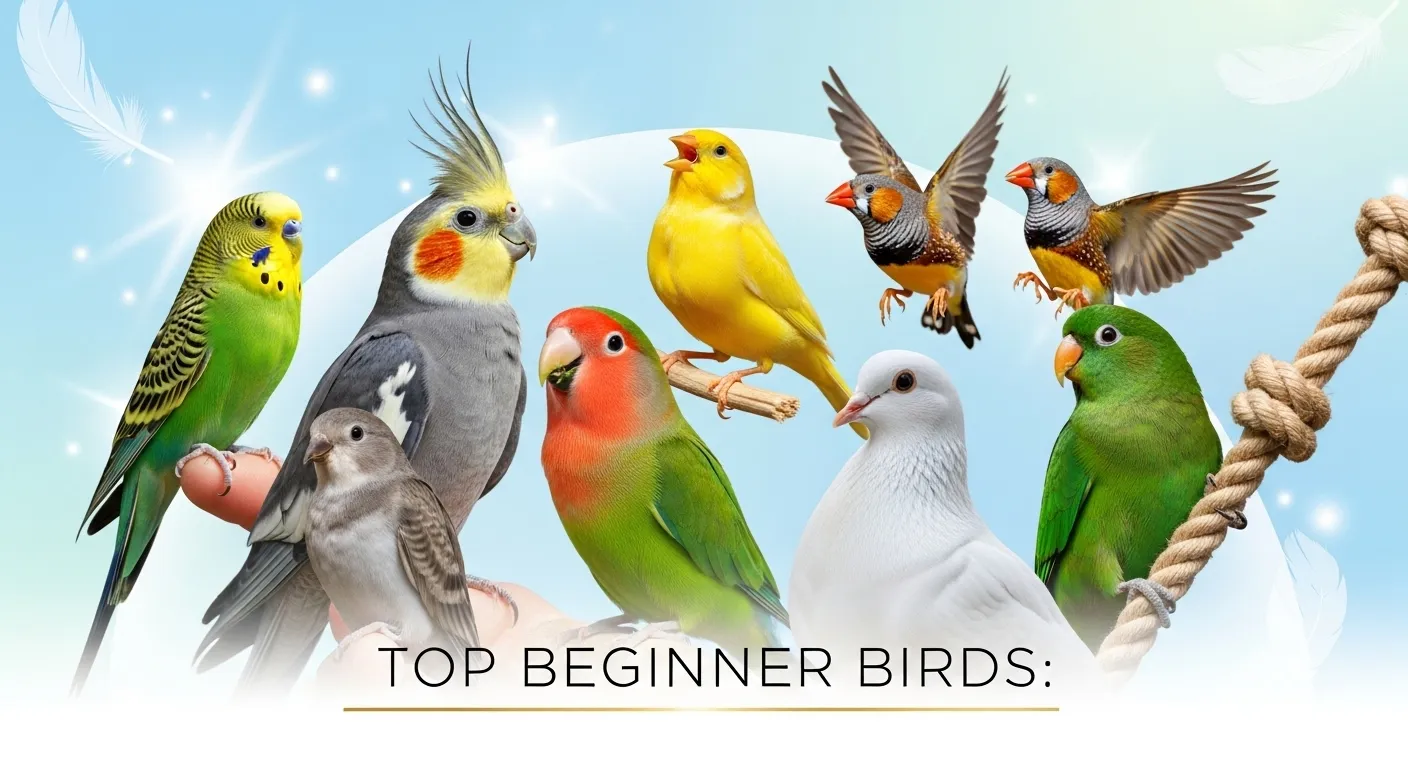Pet birds bring joy to many homes. They sing, play, and form bonds with owners. If you are new to bird care, pick species that need less work. This guide covers top options. It includes care basics and tips to help you start right. Think about your time, space, and home setup before choosing.
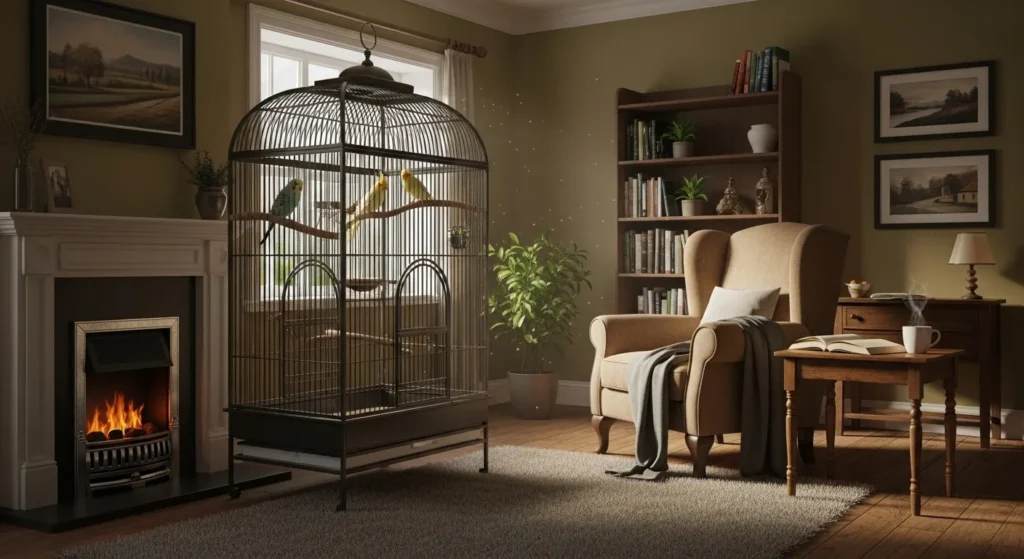
Why Choose a Pet Bird as a Beginner?
Birds fit well in apartments or small spaces. They live 5 to 20 years on average. Some need daily chats and play. Others watch quietly from their cage. Key factors include noise level, mess, and vet needs. Birds eat seeds, pellets, and fresh foods. Keep their area at 70 to 80 degrees Fahrenheit. Use our pet breed finder quiz to match a bird to your lifestyle.
Common questions include: What is the easiest bird to own? Are birds good for kids? How much time do they need? This post answers those. It draws from expert sites like PetMD and The Spruce Pets.
Top Pet Birds for Beginners
Here are seven solid picks. Each suits first-time owners. They are friendly and simple to handle.
Budgie (Parakeet)
Budgies come from Australia. They reach 7 inches long. Colors include green, blue, and yellow. These birds live 5 to 10 years.
Pros: Small size, low cost, quick to tame. They chirp softly and learn words.
Cons: Messy eaters, need daily out-of-cage time.
Care: Give a cage at least 18 by 18 inches. Feed pellets, seeds, veggies, and fruits. Let them fly 1 hour daily in a safe room. Train with treats for bonding.
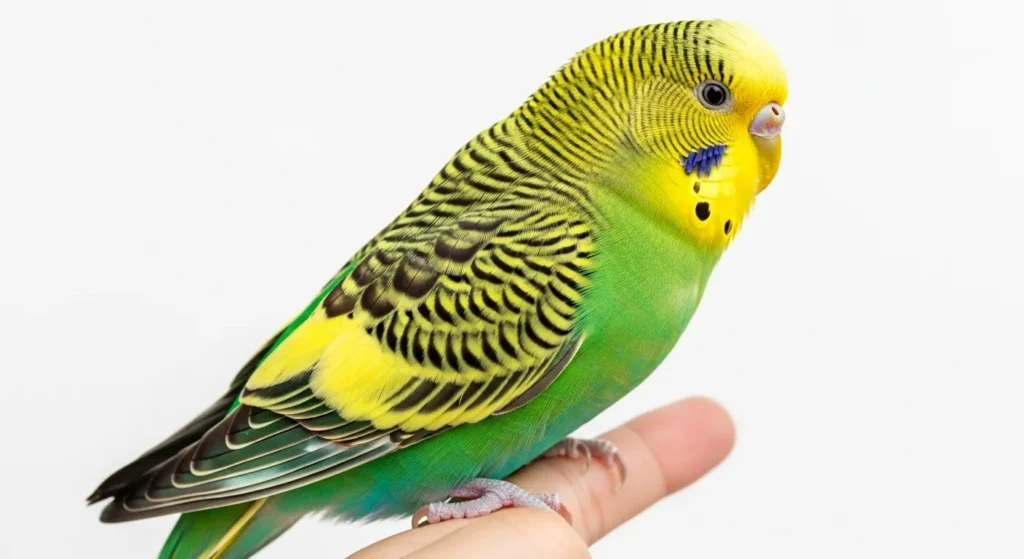
Link to pet name generator for fun budgie names.
Cockatiel
Cockatiels grow to 12 inches. They have crests on their heads. Gray bodies with orange cheeks are common. They live 15 to 20 years.
Pros: Gentle, whistle tunes, bond well with families.
Cons: Need bigger space, can get bored without toys.
Care: Use a 20 by 20 inch cage minimum. Offer pellets, seeds, and greens. Provide perches and swings. Spend 2 hours daily interacting. Watch for dust from feathers.
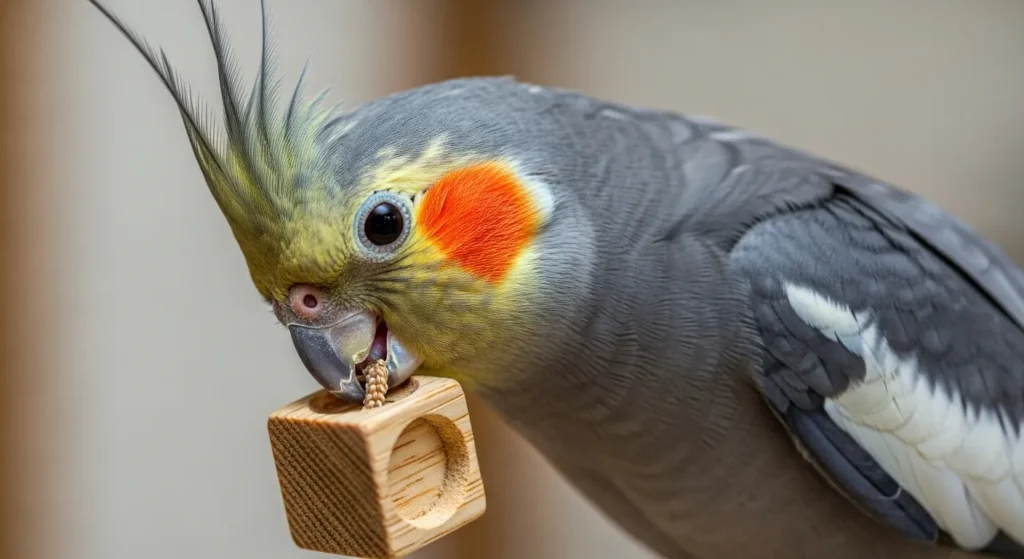
Canary
Canaries measure 5 inches. Males sing beautifully. Yellow is the classic color. They live 10 to 15 years.
Pros: Quiet singers, low handling needs, easy diet.
Cons: Males sing loudest, prefer living alone.
Care: House in a 16 by 20 inch cage. Feed seeds and pellets. Add cuttlebone for calcium. Clean weekly to avoid smells. Place near light but not direct sun.
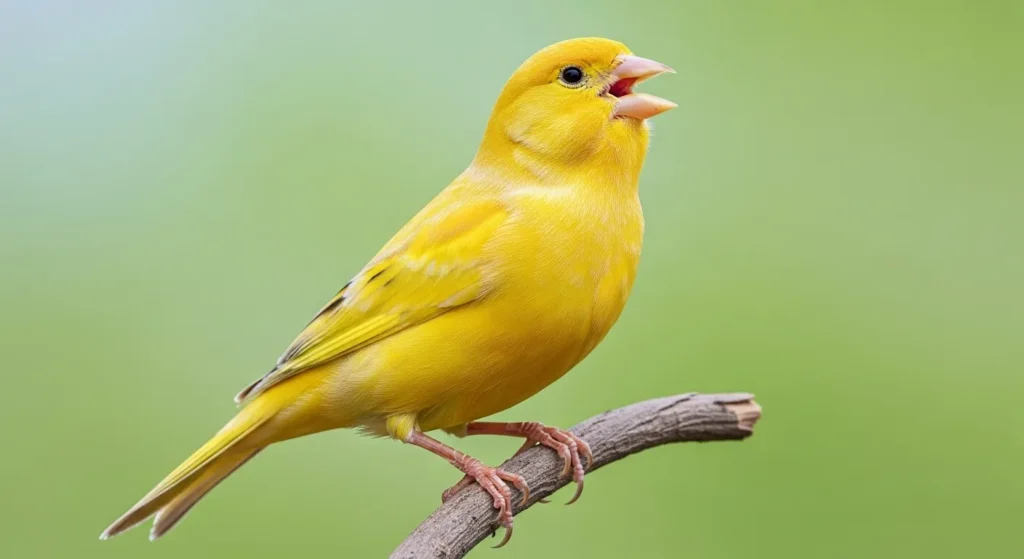
Finch
Finches stay under 6 inches. Zebra finches have stripes. They live 5 to 10 years.
Pros: Colorful flocks, watchable, low interaction.
Cons: Best in pairs, not hands-on pets.
Care: Need a flight cage 30 inches long. Feed finch mix and veggies. Keep two or more together. Mist for baths. Avoid handling to reduce stress.
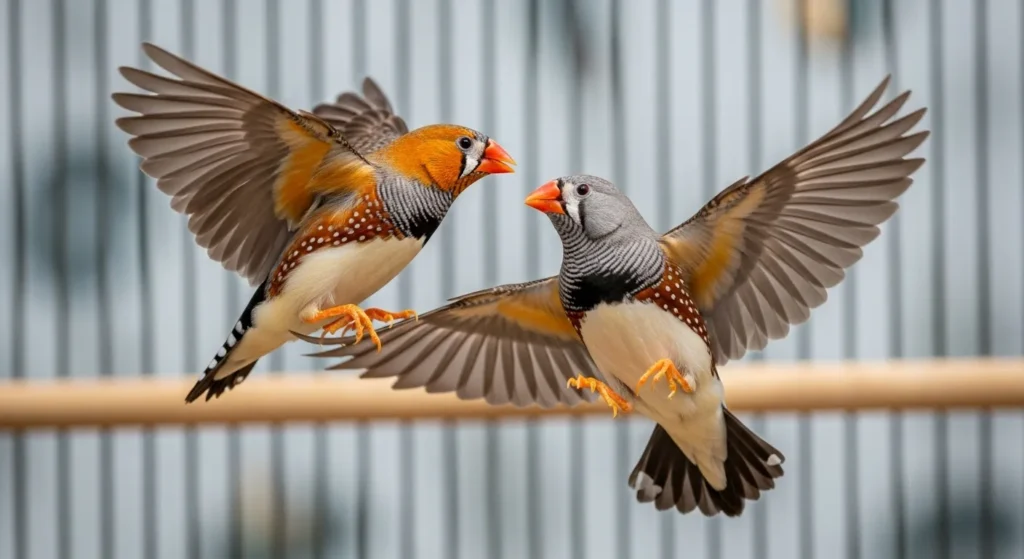
Lovebird
Lovebirds reach 6 inches. They show pink faces. Live 10 to 15 years.
Pros: Playful, colorful, learn tricks.
Cons: Pair them or they get lonely, can nip if bored.
Care: Cage 24 by 18 inches for one. Pellets, seeds, and nuts. Chew toys prevent boredom. Handle daily from young age. Check for aggression.
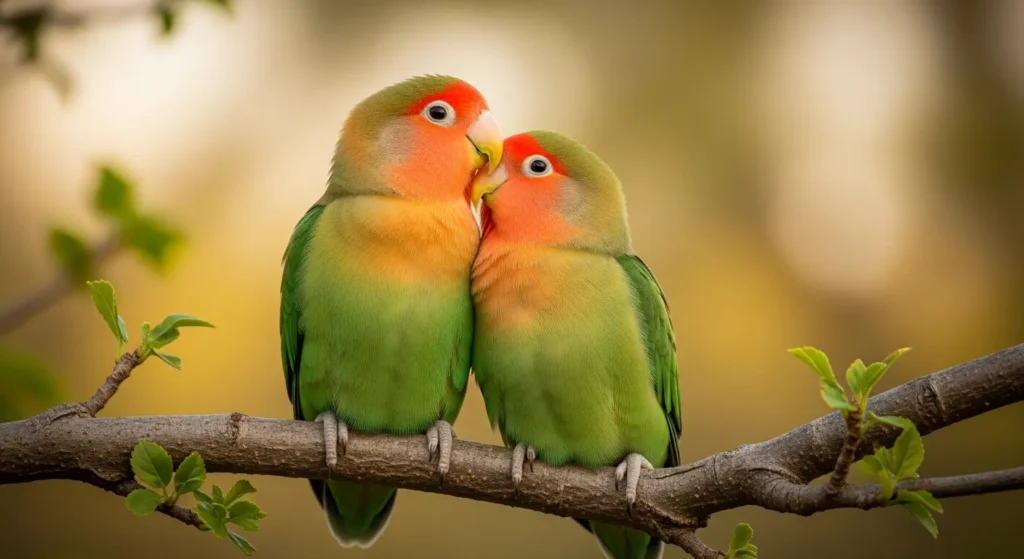
Dove
Doves grow to 12 inches. White or ringneck types work well. They live 10 to 15 years.
Pros: Soft coos, calm, less messy.
Cons: Need pairs, shy at first.
Care: 24 by 24 inch cage. Feed dove mix and greens. Gentle handling builds trust. Cover cage at night. Quiet for apartments.
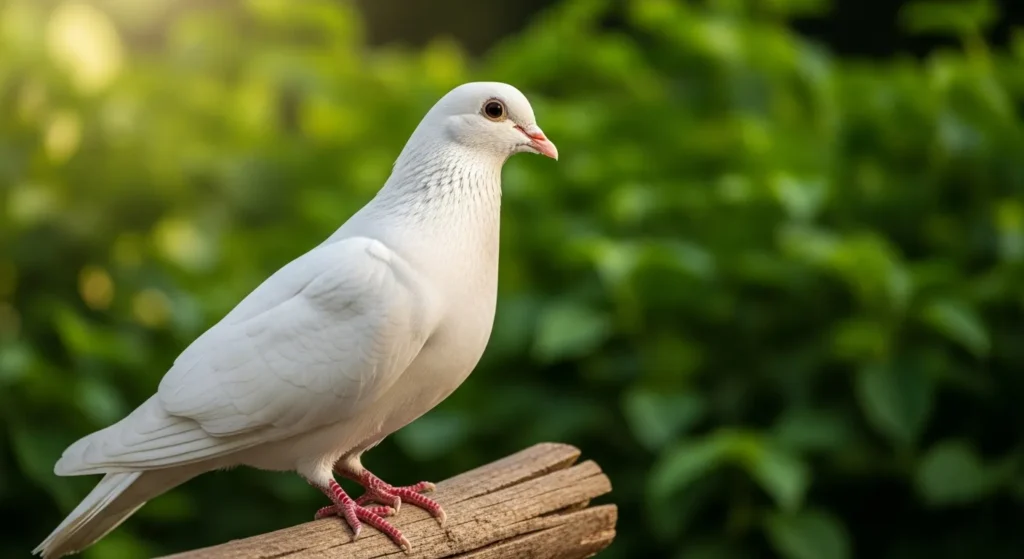
Parrotlet
Parrotlets are 5 inches. Green or blue feathers shine. Live 15 to 20 years.
Pros: Bold personality, quiet, apartment-friendly.
Cons: High energy, need toys.
Care: 18 by 18 inch cage. Pellets and fruits. Rotate toys weekly. Train early for cuddles. Vet check yearly.
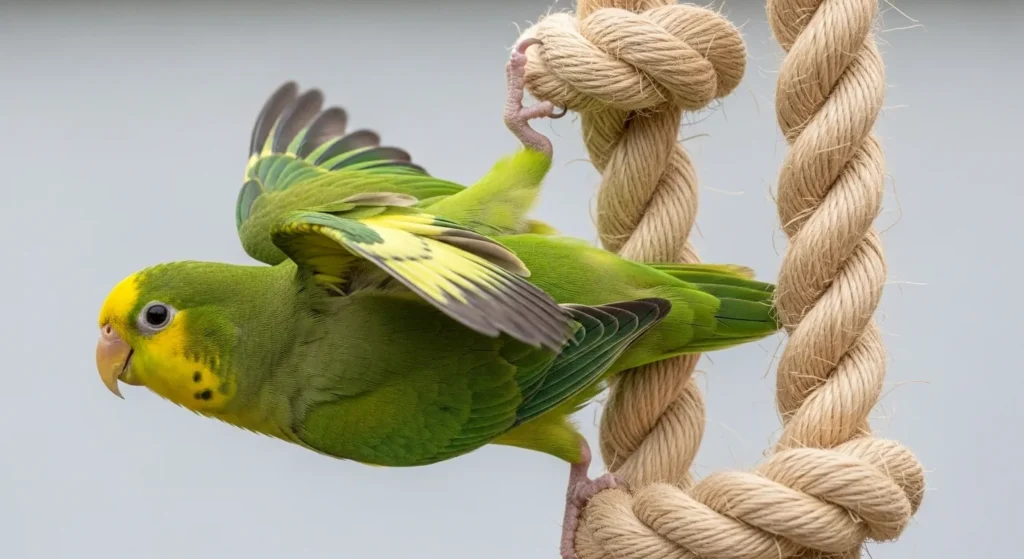
Basic Care for Your New Bird
Start with a vet visit. Find an avian specialist. Diet matters most. Use 70% pellets, 20% veggies, 10% fruits. Fresh water daily. Clean cage bottom every day, full clean weekly.
Cage setup: Horizontal bars for climbing. Perches at different heights. No wires near feet. Toys: Bells, ladders, mirrors.
Health signs: Watch for ruffled feathers or less eating. Use our pet symptom checker for quick advice.
Training: Use positive steps. Clicker helps. Teach step-up command.
Common issues: Overgrown nails need trim. Beak grows too. Foods to avoid: Avocado, chocolate, caffeine.
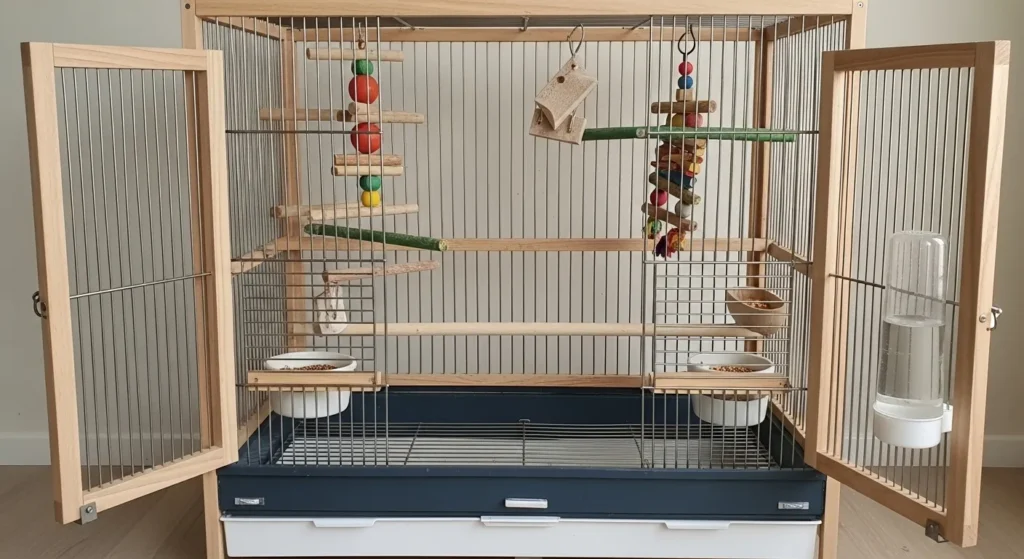
For more, see RSPCA bird care.
Questions from New Owners
What is the best first bird? Budgies top the list for ease.
Are birds low-maintenance? They need daily care but less than dogs.
Can birds live with cats? Supervise always. Birds are prey.
How to pick a healthy bird? Look for bright eyes, smooth feathers, active moves.
Do birds need sunlight? Yes, 10-12 hours daily, filtered.
For food safety, try our pet food safety checker.
This setup helps your bird thrive. Start small and learn as you go.
